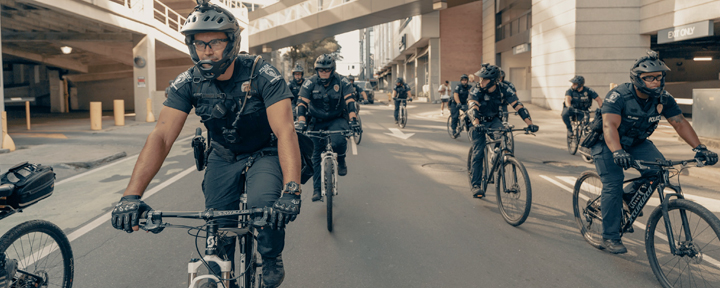
Are you familiar with the phrase “do as I say, not as I do?”
While this phrase may be heard among parents raising children, it should not be used in officer training. It is well known that teaching by example is one of the most powerful forms of training, not hypocrisy among one’s own instruction. After all, instruction that does not reflect one’s action can cause confusion—something you don’t want among those sworn to protect our communities.
Training must be as realistic as possible for skill building, skill transfer to the field and maximum safety of our officers and nation.
Realistic Officer Training
More than training by example, the principle of realistic training also encompasses training tools and accessories. If you were to perform a Google search for law enforcement training, you would receive a medley of training options on the market: simulation, virtual reality (VR), Force-on-Force, various classroom instruction and so forth.
Having a variety of training selections—especially with different price ranges, sizes and department customization options—is beneficial. But which of these options are actually cost-effective and realistic, and how does your department determine this?
The biggest indicator of a training option’s realism is how it compares to life in the field. As such, officers must be equipped with all of the accessories they normally have on their belt, must be immersed physically and psychologically, experience stress and practice engaging in challenging situations.
Finding the Best Training Option
While simplified, the list creates categories for departments to compare each training option against. For example: Does it allow officers to train utilizing the entire toolbelt? Does it immerse officers physically and psychologically? Does it cause stress by portraying challenging situations? Fortunately, VirTra’s judgmental use of force and de-escalation simulations allow departments to check “yes” next to each question.
How about VR? This one is a bit more difficult, as it depends on the specific VR product, what accessories each individual company produces, etc. Some companies have tethered accessories and/or produce video game-like visuals. Both of these make achieving physical and psychological fidelity difficult to achieve, meaning learning is less likely to occur.
As an instructor, it is your job to ensure officers are provided the most realistic training possible. When searching for a new training option, decide the most critical components needed in training before checking out companies. After, compare each company’s products to your list of needs. If possible, find a way to test their training scenarios for yourself and see if it initiates appropriate levels of body alarm response in yourself and your cadre.
If you would be interested in learning more about VirTra, or participating in a demonstration, contact a representative.







